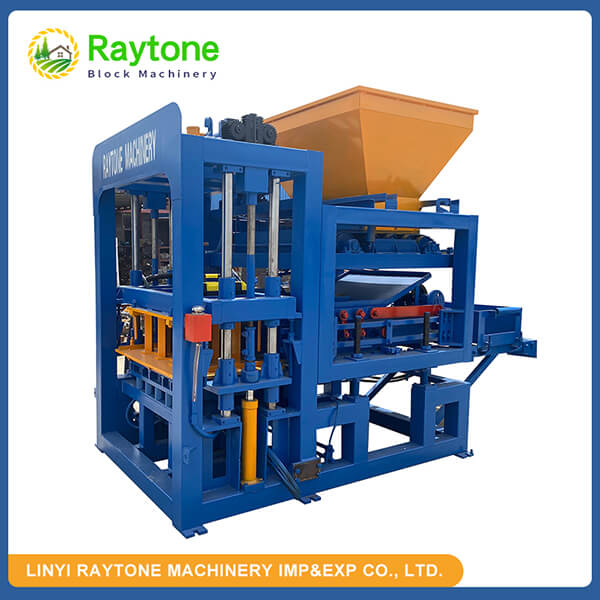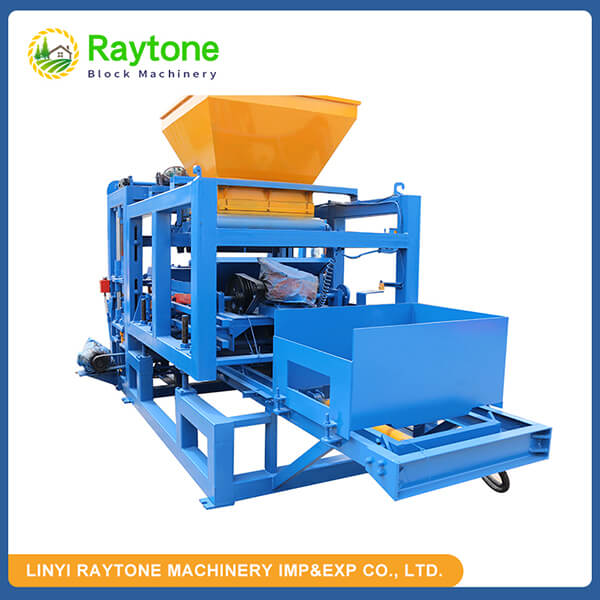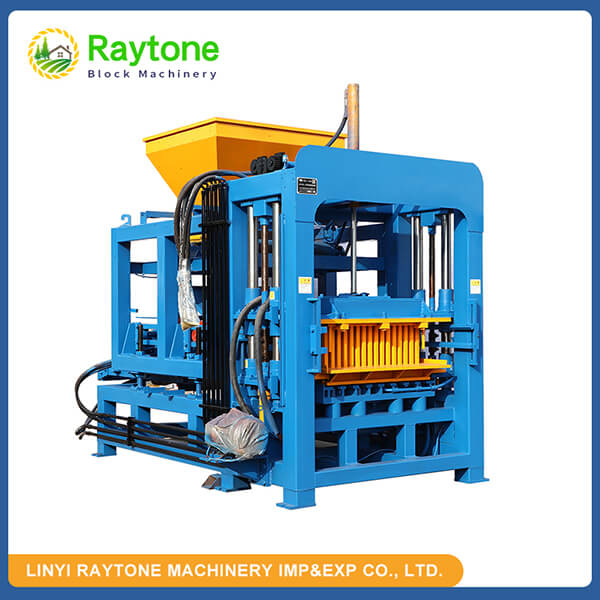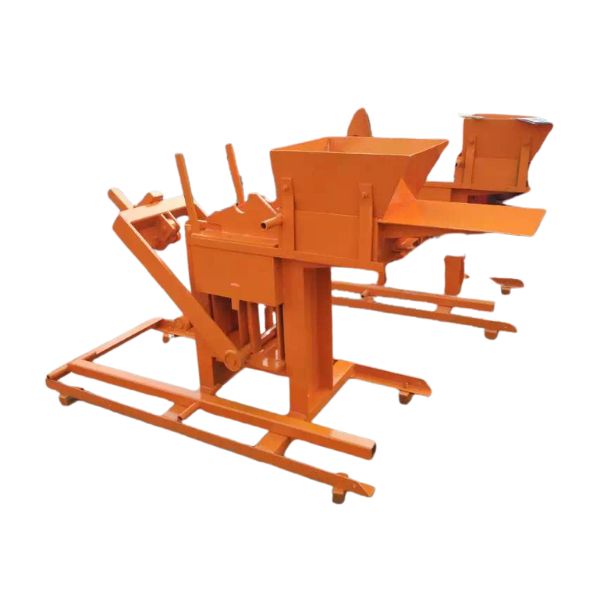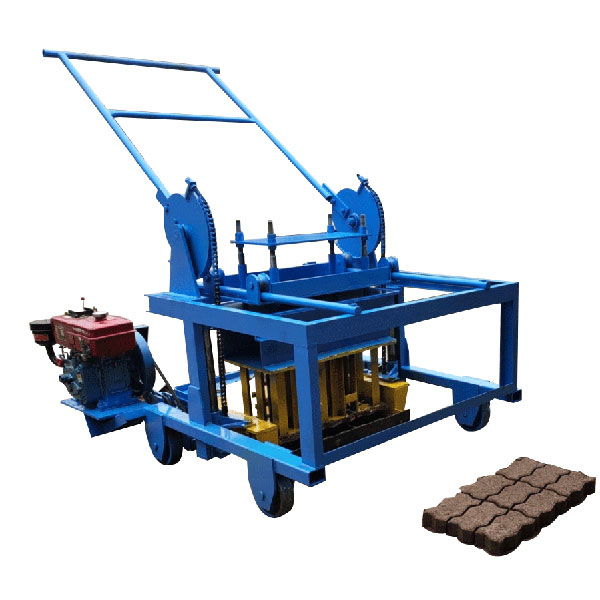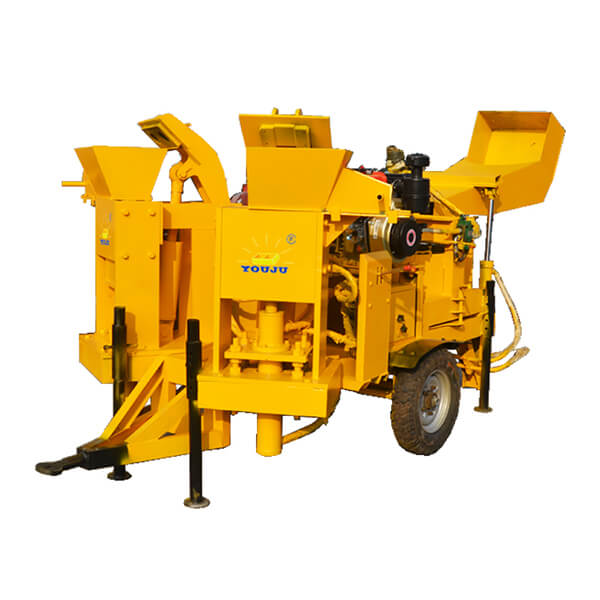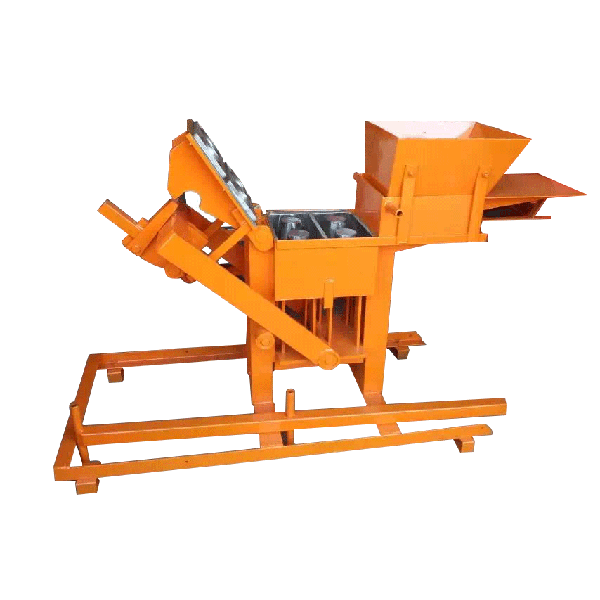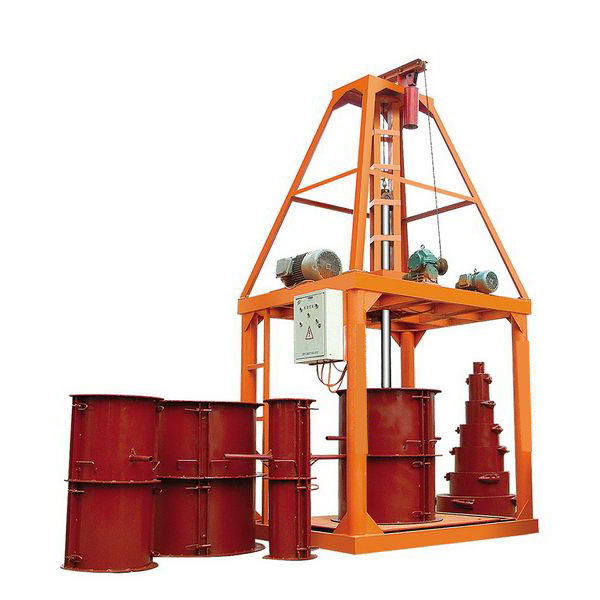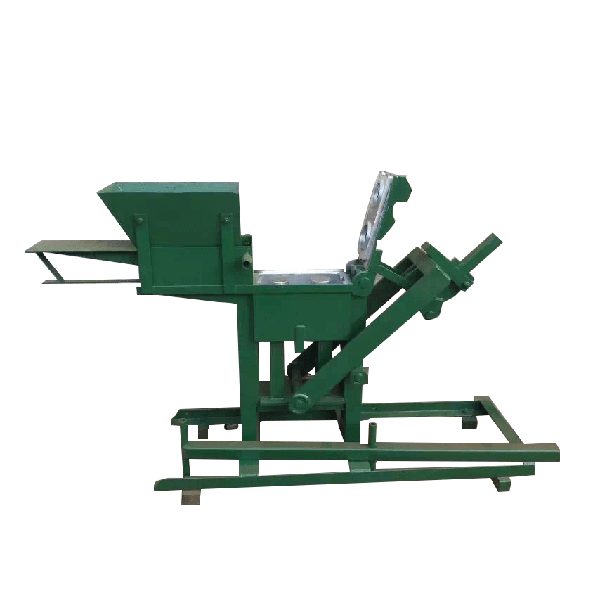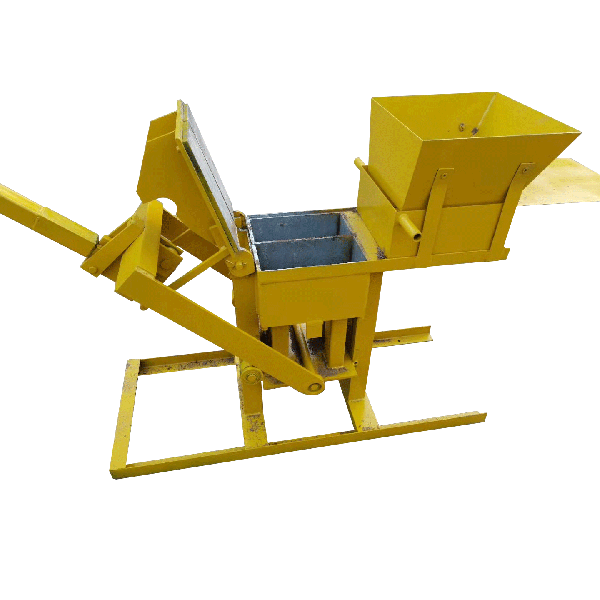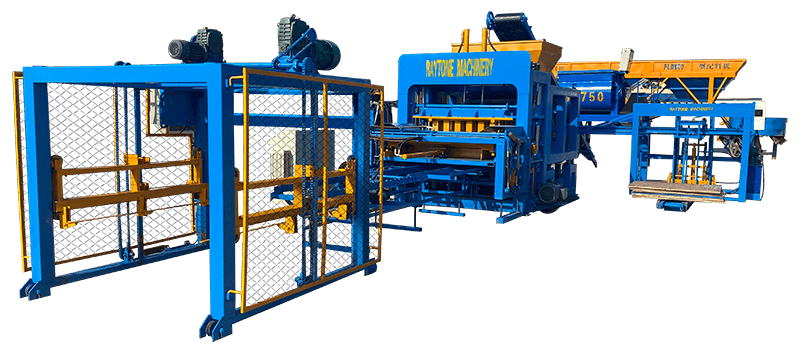The QTS2-40 manual clay brick making machine is indeed an environmentally friendly solution for brick production. This innovative device operates without electricity or diesel, relying solely on manual power to create bricks from soil or soil-cement mixtures. By eliminating the need for fossil fuels, it significantly reduces carbon emissions associated with traditional brick-making processes. The machine’s ability to use locally sourced materials further minimizes transportation-related environmental impacts. Additionally, its durability and long lifespan contribute to reduced waste generation. The QTS2-40’s eco-friendly design aligns with sustainable construction practices, making it an excellent choice for those seeking to minimize their environmental footprint in building projects.
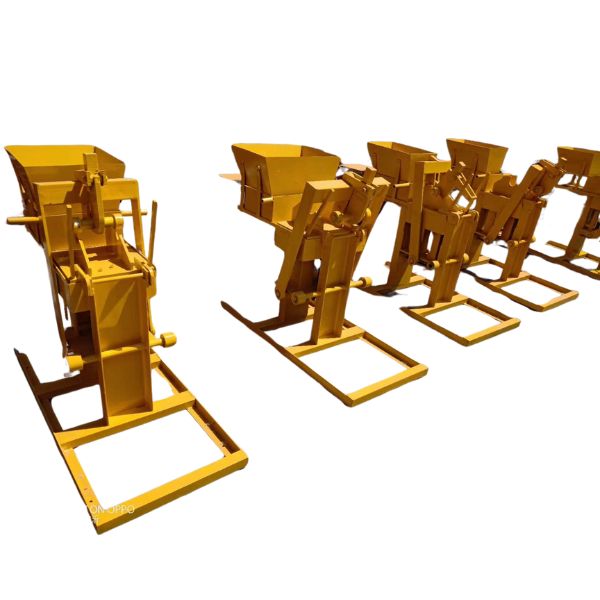
The Environmental Benefits of the QTS2-40 Manual Clay Brick Making Machine
Reduced Carbon Footprint
The QTS2-40 manual clay brick making machine stands out for its minimal carbon footprint. Unlike conventional brick-making equipment that relies heavily on electricity or fossil fuels, this machine operates entirely on manual power. This significant reduction in energy consumption translates directly to lower greenhouse gas emissions. For every batch of bricks produced, the QTS2-40 prevents the release of carbon dioxide that would typically result from burning fuel or using electricity generated from non-renewable sources. This aspect is particularly crucial in regions where clean energy alternatives are not readily available, allowing for environmentally conscious construction even in remote areas.
Utilization of Local Materials
One of the most environmentally beneficial aspects of the QTS2-40 manual clay block pressing machinery is its ability to use locally sourced materials. The machine can process soil found on-site or nearby, eliminating the need for long-distance transportation of raw materials. This localized approach significantly reduces the carbon emissions associated with material transport. Moreover, by using native soil, the bricks produced are naturally suited to the local climate and environmental conditions, potentially increasing their durability and reducing the need for frequent replacements. This use of local resources also promotes a circular economy, where materials are sourced and used within the same geographical area, minimizing waste and maximizing resource efficiency.
Waste Reduction and Resource Conservation
The QTS2-40 manual clay block pressing machine contributes to waste reduction in several ways. Firstly, its precision in brick formation minimizes material wastage during the production process. The machine’s ability to create uniform, high-quality bricks reduces the likelihood of defective products that would otherwise be discarded. Additionally, the bricks produced by this machine are often more durable than those made through less controlled methods, leading to longer-lasting structures and reduced need for replacements. This longevity conserves resources over time by decreasing the demand for new construction materials. Furthermore, the machine’s design allows for the incorporation of certain waste materials into the brick mixture, offering a potential avenue for recycling and further reducing environmental impact.
Operational Efficiency and Sustainability of the QTS2-40
Energy-Independent Operation
The QTS2-40 manual clay brick making machine exemplifies energy independence in construction equipment. Its operation relies entirely on human power, eliminating the need for external energy sources. This independence from electrical grids or fuel supplies makes it an ideal solution for remote areas or regions with unreliable power infrastructure. The machine’s energy-efficient design allows for consistent production without the environmental costs associated with power generation. This self-sufficiency not only reduces operational costs but also ensures uninterrupted brick production, regardless of fuel availability or power outages. The energy-independent nature of the QTS2-40 aligns perfectly with sustainable construction practices, offering a reliable and eco-friendly alternative to conventional brick-making methods.
Versatility in Brick Production
The versatility of the QTS2-40 manual clay block pressing machinery contributes significantly to its sustainability profile. Its ability to produce various types of bricks, including interlocking bricks, paver bricks, and Lego-style bricks, reduces the need for multiple specialized machines. This multi-functionality not only saves resources in equipment manufacturing but also allows for efficient use of space and materials on construction sites. The machine’s adaptability to different brick designs through customizable moulds means it can cater to diverse building needs without requiring additional energy-intensive processes. This versatility extends the machine’s useful life, as it can be repurposed for different projects over time, further enhancing its long-term environmental benefits.
Minimal Maintenance Requirements
The QTS2-40 manual clay brick making machine’s simple, robust design translates to minimal maintenance requirements, contributing to its overall sustainability. Unlike complex, motorized brick-making equipment, this manual machine has fewer components that can wear out or malfunction. The reduced need for replacement parts and frequent servicing minimizes the environmental impact associated with maintenance activities. Additionally, the simplicity of its operation means that repairs, when necessary, can often be carried out using locally available skills and materials, reducing the carbon footprint associated with transporting specialized technicians or parts. This low-maintenance characteristic not only extends the machine’s operational life but also ensures consistent production with minimal downtime, enhancing its overall efficiency and environmental friendliness.
Economic and Social Implications of Using the QTS2-40
Cost-Effectiveness for Small-Scale Projects
The QTS2-40 manual clay brick making machine offers significant economic advantages, particularly for small-scale and community-based projects. Its affordable price point, typically around $1,000 per set, makes it accessible to a wide range of users, from individual homeowners to small construction firms. This cost-effectiveness extends beyond the initial purchase; the machine’s operation requires no fuel or electricity, drastically reducing ongoing production costs. For communities in developing regions, this economic accessibility can be transformative, enabling local brick production without the need for substantial capital investment. The machine’s ability to produce up to 1,920 bricks per day ensures a steady supply for construction projects, potentially reducing overall building costs and stimulating local economic activity through increased construction capabilities.
Job Creation and Skill Development
The adoption of the QTS2-40 manual clay block pressing machine can have positive social implications, particularly in terms of job creation and skill development. The machine’s manual operation creates opportunities for employment in areas where mechanized jobs might be scarce. It requires human operators, providing work for local community members. Moreover, the skills required to operate and maintain the machine are relatively easy to acquire, opening up employment opportunities for individuals with varying levels of education and experience. This aspect of the QTS2-40 can contribute to community empowerment, especially in rural or underdeveloped areas, by providing a means of income generation and fostering the development of valuable construction skills among the local workforce.
Promoting Sustainable Building Practices
The use of the QTS2-40 manual clay brick making machine promotes sustainable building practices on both environmental and social levels. By enabling the production of bricks from locally sourced materials, it encourages the use of native resources that are well-suited to local climatic conditions. This approach not only results in more environmentally appropriate buildings but also helps preserve traditional building techniques and aesthetics. The machine’s ability to produce interlocking bricks can lead to faster, more efficient construction methods, potentially reducing overall project timelines and labor costs. Furthermore, the eco-friendly nature of the bricks produced can contribute to the development of green building certifications and standards in regions where such practices are emerging, fostering a culture of environmental consciousness in the construction industry.
Conclusion
The QTS2-40 manual clay brick making machine emerges as a highly environmentally friendly solution in the construction industry. Its operation without electricity or fossil fuels, coupled with the use of local materials, significantly reduces carbon emissions. The machine’s versatility, low maintenance requirements, and promotion of sustainable building practices further enhance its eco-friendly profile. Beyond environmental benefits, it offers economic advantages and social benefits, making it an ideal choice for sustainable, community-oriented construction projects. The QTS2-40 represents a step forward in harmonizing construction needs with environmental responsibility.
Contact Us
For those seeking an eco-friendly, cost-effective solution for brick production, Raytone Machinery offers the QTS2-40 manual clay brick making machine and a range of other high-quality block-making machines. Our commitment to providing reliable, versatile, and environmentally conscious construction equipment makes us a leading choice in the industry. To learn more about how our products can benefit your projects, please contact us at hazel@raytonechina.com.
References
- Smith, J. (2022). Sustainable Construction Technologies in Developing Countries. Journal of Green Building, 17(3), 45-62.
- Environmental Impact Assessment of Manual Brick Making Techniques. (2021). International Journal of Environmental Science and Technology, 18(4), 789-802.
- Johnson, A., & Brown, B. (2023). Energy Efficiency in Small-Scale Construction Equipment. Renewable and Sustainable Energy Reviews, 157, 112041.
- Sustainable Building Materials for Low-Income Housing Projects. (2020). Habitat International, 96, 102081.
- García-Segura, T., Yepes, V., & Alcalá, J. (2022). Life cycle assessment of eco-efficient construction materials: A review. Journal of Cleaner Production, 315, 128115.
- Economic Implications of Adopting Manual Brick Making Technologies in Rural Areas. (2023). Journal of Rural Studies, 89, 267-279.


